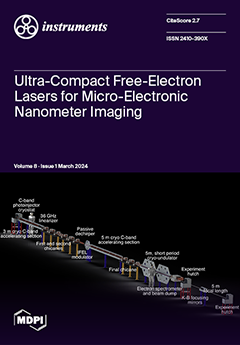Open AccessArticle
Manipulation and Wakefield Effects on Multi-Pulse Driver Beams in PWFA Injector Stages
by
Fabio Bosco, Gerard Andonian, Obed Camacho, Martina Carillo, Enrica Chiadroni, Anna Giribono, Gerard Lawler, Nathan Majernik, Pratik Manwani, Mauro Migliorati, Andrea Mostacci, Luigi Palumbo, Gilles Jacopo Silvi, Bruno Spataro, Cristina Vaccarezza, Monika Yadav and James Rosenzweig
Viewed by 1532
Abstract
Particle-driven plasma wakefield acceleration (PWFA) exploits the intense wakefields excited in a plasma by a high-brightness driver beam in order to accelerate a trailing, properly delayed witness electron beam. Such a configuration offers notable advantages in achieving very large accelerating gradients that are
[...] Read more.
Particle-driven plasma wakefield acceleration (PWFA) exploits the intense wakefields excited in a plasma by a high-brightness driver beam in order to accelerate a trailing, properly delayed witness electron beam. Such a configuration offers notable advantages in achieving very large accelerating gradients that are suitable for applications in particle colliders and photon production. Moreover, the amplitude of the accelerating fields can be enhanced by resonantly exciting the plasma using a multi-pulse driver beam with a proper time structure. Before the injection into the plasma stage, the pulsed electron beam, conventionally termed the
comb beam, is usually produced and pre-accelerated in a radio-frequency (RF) linear accelerator (linac). In this pape, we discuss challenging aspects of the dynamics that comb beams encounter in the RF injector stage preceding the plasma. In particular, the examples we analyze focus on the use of velocity bunching to manipulate the time structure of the beam and the impact of dipole short-range wakefields on the transverse emittances. Indeed, both processes crucially affect the phase space distribution and its quality, which are determinant features for an efficient acceleration in the plasma. In addition, the analyses we present are performed with the custom tracking code MILES, which utilizes semi-analytical models for a simplified evaluation of wakefield effects in the presence of space charge forces.
Full article
►▼
Show Figures




